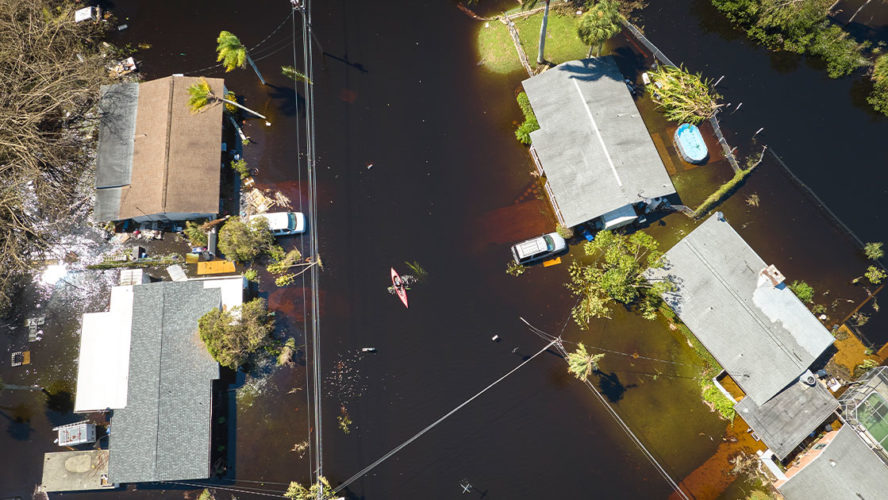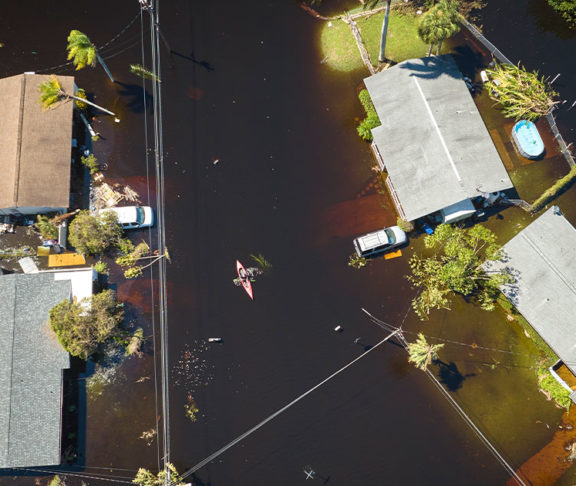All this flooding portends something nasty for public health.

Henry Skinner, Ph.D., M.Jur.
CEO, AMR Action Fund
“With fall torrents on the horizon, more floods are sure to come. There’s nothing we can do to stop the rain. But we can prepare for it — and the germs it spreads.”
Winter delivered a series of atmospheric rivers that soaked California and submerged towns from the Central Valley to the Santa Cruz Mountains. Spring saw destructive downpours that dumped more than two feet of rain in half a day on parts of South Florida. Summer storms put large parts of New England underwater.
Strong storms and floods have long been known to spread pathogens and inflict illness. Now emerging research shows they may be supercharging the spread of drug-resistant bacteria and fungi, posing near- and long-term health challenges that claim lives and strain hospital systems. Just look at Texas.
The heart of Texas
When Hurricane Harvey stalled over Houston in 2017, the acute devastation was heartbreaking — more than 100 people died, an estimated 300,000 buildings and homes were damaged or destroyed, and several wastewater treatment facilities failed, sending rivers of bacteria-loaded sewage into the streets and people’s homes.
As the flood waters receded and clean-up efforts commenced, teams of scientists began studying how the flooding affected the microbes in the surrounding environment. The findings, which are still trickling out, are concerning and should serve as a warning to residents, healthcare professionals, and policymakers in flood-prone regions.
One study, led by researchers at Texas A&M University, analyzed soil samples from six public parks in Houston at regular intervals for a year and a half after Harvey hit. Five months after the storm, levels of drug-resistant bacteria in the topsoil were so high that they posed a risk to visitors.
A separate study, led by a team at Rice University, showed that levels of pathogenic bacteria were significantly higher in water samples collected from the inside of flooded homes compared with water samples collected from flooded streets and waterways. In fact, levels of one drug-resistant gene known as sul1 were 250 times greater in homes than in bayous.
Bacteria are only part of the problem. Molds flourish in the wake of floods, which in the case of Hurricane Harvey proved lethal for some vulnerable patients.
CDC researchers published a study earlier this year in which they examined data from four Houston-area hospitals and found that the number of positive tests for invasive mold infections increased 17.5% in the 12 months after Harvey. Of the 182 patients diagnosed with such infections, all but nine were hospitalized. Half of those required intensive care and nearly a quarter died.
Rising temperatures
Floods are just one of the troubling synergies between antibiotic resistance and climate change. Several studies show that extreme heat — another hallmark of global warming — can accelerate the rate at which microbes grow, spread, and adapt to live at body temperature. Others have flagged concerns that thawing permafrost could bring forth entirely new microbes that are resistant to our available medications.
In the face of such evidence, the world needs to better prepare for the likelihood that extreme weather events will drive outbreaks of drug-resistant infections. Policymakers who are designing and implementing climate resiliency plans would do well to consider the multifaceted dynamics of antibiotic resistance, from wastewater management and agricultural practices, to public health surveillance systems and the paucity of new antibiotics in development.
It is also imperative that public health remain vigilant and proactive because the threat is here. For several days in August, Massachusetts closed nearly 70 beaches temporarily because heavy rains led to spikes in dangerous bacteria and algae blooms. That same month, the California Department of Public Health issued a statement alerting residents that summer’s dry conditions, combined with the heavy winter rains, could lead to an uptick in cases of Valley fever, a pernicious fungal infection. It’s a timely warning and the type of proactive education that could help save lives.
With fall torrents on the horizon, more floods are sure to come. There’s nothing we can do to stop the rain. But we can prepare for it — and the germs it spreads.

